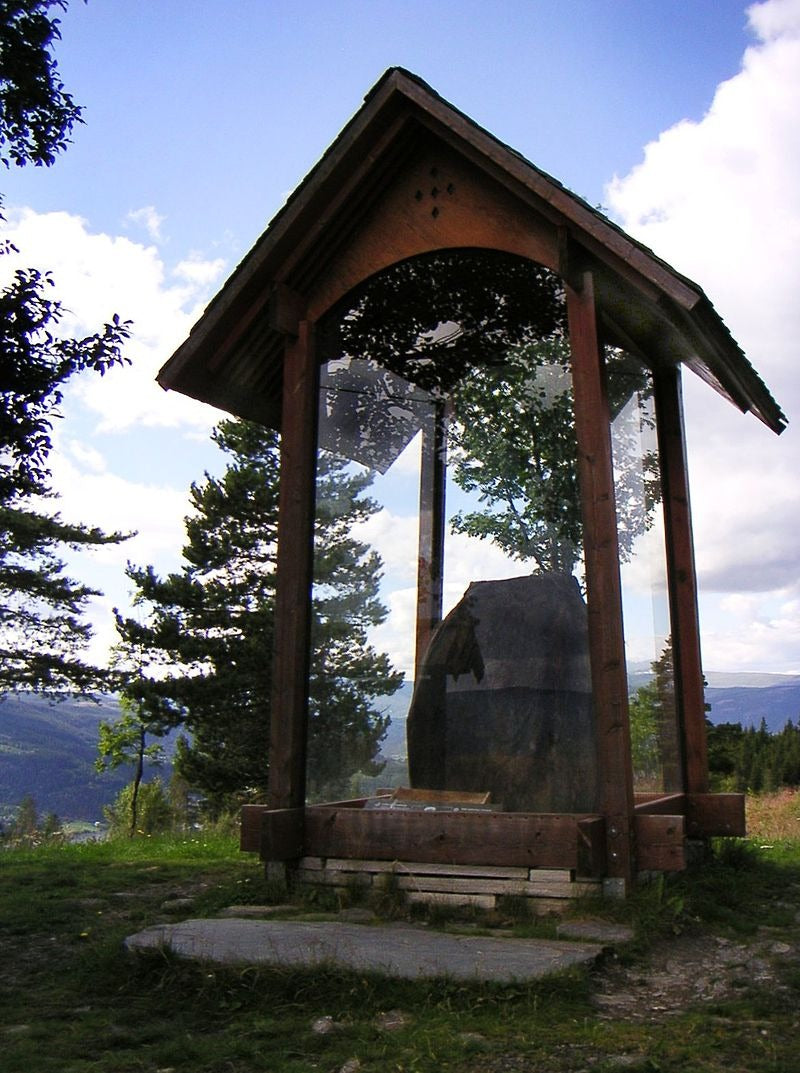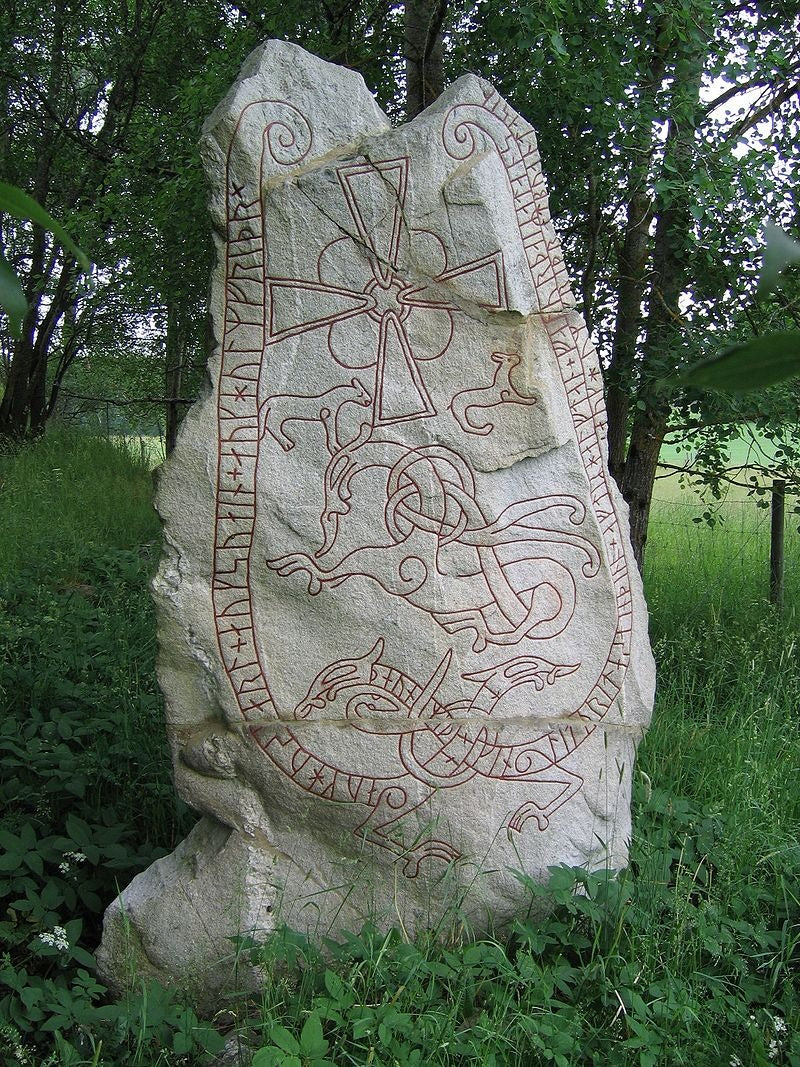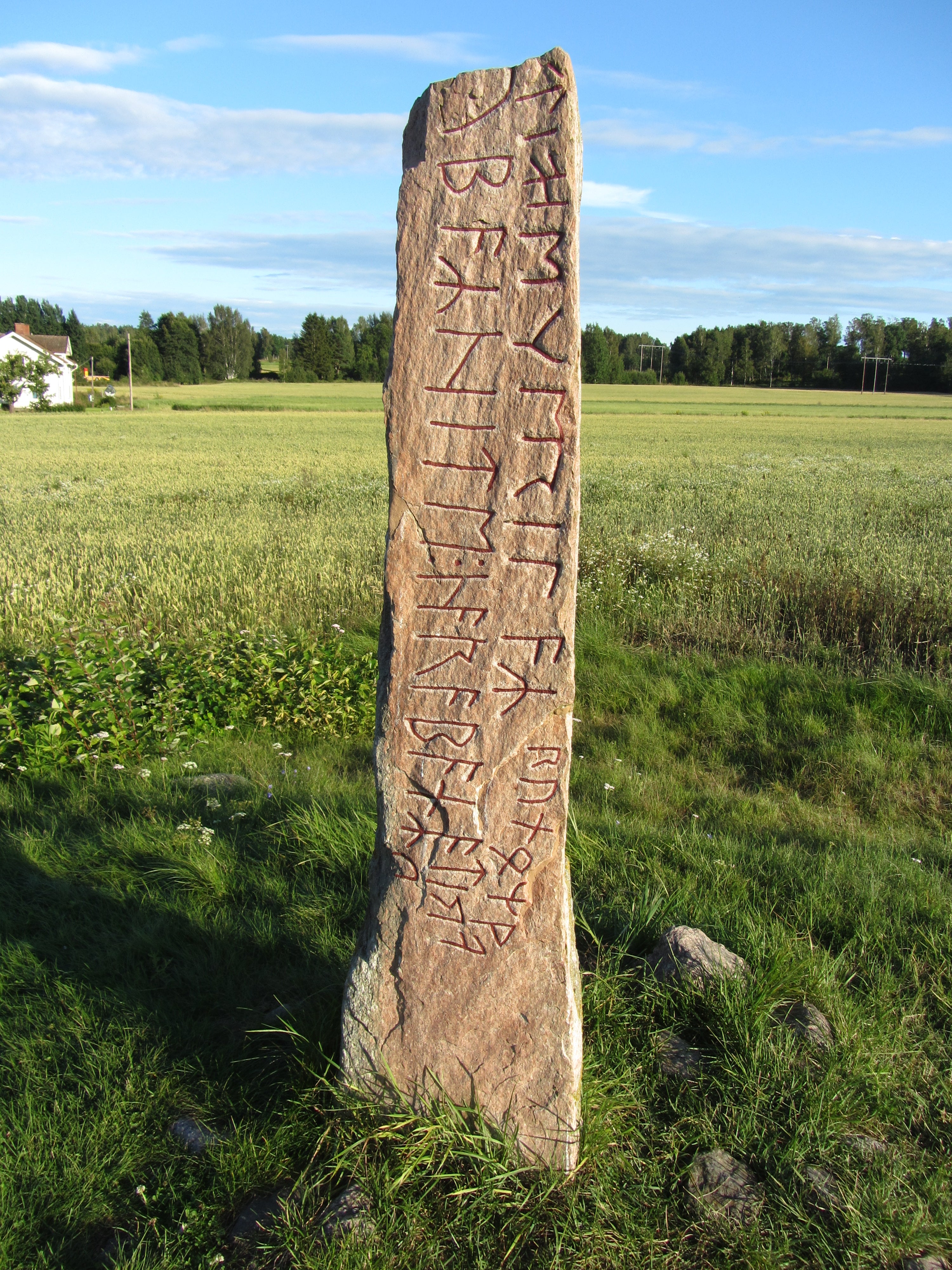
The Einang Runestone: A Window into Viking Age Norway
Have you ever wondered what secrets lie hidden in ancient stones? Well, let me tell you about a fascinating piece of history that's been sitting quietly in Norway for centuries. The Einang runestone isn't just any old rock – it's a time capsule from the Viking Age, waiting to share its story with us.
Discovery and Location
Picture this: It's the 1950s, and a farmer in Valdres, Norway, is going about his day when he stumbles upon something extraordinary. That something turned out to be the Einang runestone, nestled in the earth like a long-lost treasure. Talk about a lucky find!
This incredible piece of history now rests in Valdres, a picturesque valley in south-central Norway. It's like the stone chose the perfect spot to watch over the breathtaking landscape for centuries.
Physical Description
Now, you might be wondering, "What does this runestone actually look like?" Well, imagine a sturdy slab of rock, standing about 2 meters tall. It's not exactly pocket-sized! The stone itself is made of a type of rock called schist, which gives it a distinctive appearance.
But the real star of the show? That would be the runic inscription carved into its surface. These ancient symbols, etched by skilled hands over a thousand years ago, have withstood the test of time. It's almost as if they're daring us to unravel their secrets.
Historical Context
The Viking Age in Norway
To really appreciate the Einang runestone, we need to take a quick trip back in time. Close your eyes and imagine Norway during the Viking Age – a time of exploration, conquest, and cultural transformation. It's like stepping into an episode of your favorite historical drama!
This period, roughly from the late 8th to the mid-11th century, was when Norway was coming into its own as a unified kingdom. It was a time of great change, with old traditions mixing with new ideas. And right in the middle of all this excitement? Our friend, the Einang runestone.
Importance of Runestones
Now, you might be thinking, "It's just a stone with some scratches on it, right?" Oh, but it's so much more! Runestones were the billboards of their day – a way for people to leave their mark on the world.
These weren't just random doodles, mind you. Runestones often commemorated important events or people. They were a way of saying, "Hey, remember this person!" or "Something big happened here!" It's like they were tweeting for posterity, but with a chisel instead of a smartphone
The Runic Inscription

The inscription on the Einang stone
Translation and Interpretation
Now, let's get to the juicy part – what does the Einang runestone actually say? Well, hold onto your horned helmets (which, by the way, Vikings didn't really wear), because this is where it gets interesting.
The inscription, written in the Elder Futhark runic alphabet, reads: "Gudoy raised this stone after Gudmund, his... good..." Now, I know what you're thinking – it's not exactly War and Peace. But trust me, these few words speak volumes!
Linguistic Significance
This short phrase is a goldmine for linguists and historians alike. It's one of the earliest examples of written Norwegian we have. Can you imagine? This stone is basically the great-great-great-grandparent of every Norwegian book, newspaper, and road sign you see today.
But it's not just about the words themselves. The way they're written, the specific runes used – all of this gives us clues about how language was evolving at the time. It's like being able to eavesdrop on a conversation from over a thousand years ago!
Archaeological Significance
Dating Methods
Now, I know what you're wondering – how do we know how old this stone really is? Well, archaeologists have a few tricks up their sleeves when it comes to dating ancient artifacts.
For the Einang runestone, they've used a combination of methods. They've looked at the style of the runes, compared it to other inscriptions from the same period, and even used scientific techniques like radiocarbon dating on organic materials found nearby. It's like being a detective, but instead of solving crimes, you're solving historical mysteries!
Insights into Early Runic Writing
The Einang runestone isn't just old – it's one of the oldest runic inscriptions we've found in Norway. This makes it incredibly valuable for understanding how runic writing developed and spread.
Think of it as a snapshot of a language in its awkward teenage years. It's not quite the mature runic writing we see later, but it's definitely moved beyond its childhood scribbles. Studying this stone helps us understand how written communication evolved in Scandinavia.
Cultural Impact

Local Legends and Folklore
You know how every small town has that one weird story everyone knows? Well, the Einang runestone has been sparking local legends for centuries. Some folks say it marks the grave of a great warrior. Others claim it has magical properties.
Now, I'm not saying you should believe every tale you hear. But isn't it fascinating how one stone can inspire so many stories? It's like the runestone itself has become a character in the ongoing saga of Valdres.
Modern Interest and Tourism
Fast forward to today, and the Einang runestone is still turning heads. History buffs, language nerds, and curious tourists alike flock to see this ancient tweet set in stone. It's become a must-see attraction in Valdres, bringing a touch of Viking mystery to the Instagram age.
But it's not just about snapping a quick pic and moving on. The runestone has sparked a renewed interest in local history and heritage. It's got people asking questions about their past and thinking about how it connects to their present. Not bad for a rock, right?
Preservation Efforts
Current Conservation Status
Now, you might be wondering – how has this stone survived for so long? Well, it's not just luck. A lot of work goes into keeping the Einang runestone in tip-top shape.
Currently, the stone is protected from the elements and carefully monitored for any signs of wear and tear. It's like having a team of doctors on standby, but for a patient that's over a thousand years old!
Future Preservation Plans
But the work doesn't stop there. There are ongoing discussions about how best to preserve the runestone for future generations. Some argue for moving it to a museum where it can be more closely monitored. Others believe it should stay where it is, in its original context.
It's a tricky balance – we want to protect this piece of history, but we also want people to be able to experience it. It's like trying to share your favorite book with a friend, but you're worried they might damage it. What would you do
Conclusion
As we wrap up our journey through time with the Einang runestone, it's clear that this isn't just an old rock with some scratches on it. It's a window into a world long past, a crucial piece in the puzzle of Scandinavian history, and a source of ongoing fascination and debate.
From its discovery in a farmer's field to its status as a protected historical artifact, the Einang runestone has come a long way. It's survived centuries of Norwegian weather, sparked countless local legends, and continues to intrigue historians and tourists alike.
But perhaps the most remarkable thing about the Einang runestone is how it connects us to our past. When we look at those ancient runes, we're not just seeing strange symbols – we're seeing the thoughts and feelings of people who lived over a thousand years ago. People who, like us, wanted to leave their mark on the world.
So the next time you're in Norway, why not pay a visit to this ancient tweeter? Who knows – you might just find yourself inspired to leave your own mark on history. Just maybe not by carving it into a stone!
FAQs
- How old is the Einang runestone?
The Einang runestone is believed to date back to around 350-400 CE, making it one of the oldest runic inscriptions found in Norway.
- What does the inscription on the Einang runestone say?
The inscription reads: "Gudoy raised this stone after Gudmund, his... good..." The last word is partially lost.
- Where can I see the Einang runestone?
The runestone is located in Valdres, a valley in south-central Norway. It's a popular tourist attraction in the area.
- Why is the Einang runestone important?
It's one of the earliest examples of written Norwegian and provides valuable insights into the development of runic writing and early Scandinavian culture.
- Is the Einang runestone related to Vikings?








